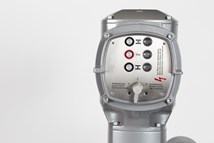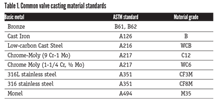Cooperation between groups helps set standards for shale gas development
In a departure from the often contentious positioning taken by energy firms involved in hydraulic fracturing and the environment groups normally opposed to fossil fuel development, agreement has been reached to create a mechanism to establish standards for shale gas development.
#standards
The group has established 15 standards which include:
- Zero discharge of wastewater until CSSD adopts a standard for treating shale wastewater.
- Recycling flowback and produced water for use in drilling and fracturing.
- Closed loop containment of drilling fluids and flowback water, thereby eliminating the use of pits.
- Removal of free hydrocarbons from flowback and produced waters before storage, and use of impoundments with double-lined impermeable material and equipped with leak detection.
- Establishment of an Area of Review before drilling a well, in which the operator must conduct a study of subsurface geology and a corresponding risk analysis.
- Monitoring of existing water sources to demonstrate that water quality is not impacted by operations.
- Casing and cement standards that ensure complete isolation of the wellbore from surface waters and aquifers. Chemical constituents of well stimulation fluids must be publicly disclosed; however, a provision in the standard allows a firm to assert trade secret protection to prevent mandatory disclosure of this information.
- Well pad design that minimizes risk of contamination to water sources, and development of response and notification plans in preparation for a spill or release.
- Capture for sale of pipeline-quality gas, with certain exceptions. Gas not captured must be flared and not vented.
- Flaring requirements, including a 98% destruction efficiency of methane, and a prohibition on pit flaring.
- Establishment of emissions standards for non-road dedicated diesel drilling rig engines and fracturing pump engines.
- Establishment of emissions standards for compressor engines used in unconventional drilling and hydraulic fracturing.
- Installation of controls for that achieve at least a 95% reduction in VOC emissions for all individual storage vessels with VOC emissions equal to or greater than 6 tpy.
- Establishment of standards for various equipment dedicated to unconventional activities, including reciprocating compressors and pneumatic controllers.
- Compliance deadlines for increased use of lower-emitting trucks to transport fresh or flowback water, limits vehicle idling, and requires use of ultra-low sulfur diesel fuel.
- Next on the agenda: to create a system by which the standards will be rated and certification granted.
Source: Fracking Insider
RELATED CONTENT
-
The Basics of Eccentric Plug Valves
Wastewater systems present many challenges to pumps and valves because the flow can contain grit, solids and debris, depending where in the process the equipment is located.
-
Paint & Coatings
A walk through a typical valve distributor’s warehouse will yield a contrasting view of either silver or black products.
-
Testing of Hydrogen Valves
Valves are used to control all types of fluids, and while some are easy to manage, others can be a challenge. At the top of the challenging list sits hydrogen, the smallest, lightest molecule known to man.







 Unloading large gate valve.jpg;maxWidth=214)


